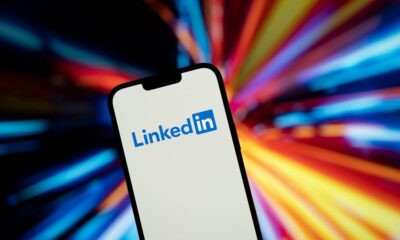SOCIAL
LinkedIn Shares New Insights into Maximize Response to Your InMail Messages
LinkedIn has published a new analysis of the best approaches to InMail, and maximizing DM opens in the app, based on ‘tens of millions of InMails’ sent between May 2021 and April 2022 in the app.
Which is primarily focused on recruiters – though really, a broad range of people use InMail to get in touch with people on LinkedIn, for different purpose, and many of the findings will apply in a more general sense.
But LinkedIn does make note of the option as a key recruitment tool.
As per LinkedIn:
“More responses mean recruiters get more bang for their buck from their InMail allotment. That’s because recruiters earn an InMail credit back if their message receives a response within 90 days (even if it’s a negative one). So, response rates not only reflect candidate engagement but also recruiter efficiency. But what kind of InMails actually drive higher response rates and how can recruiters improve their own InMail response rate?”
It’s worth checking out the full report if you’re looking to use LinkedIn mail within your digital marketing approach, but in summary, LinkedIn’s key findings are:
- Shorter InMails perform significantly better than longer ones
- Avoid sending InMails on Saturday (and probably Friday too)
- Personalized InMails perform about 15% better than ones sent in bulk
- Candidates who are “Recommended Matches” or “Open to Work” are about 35% more likely to respond than others
Which is much the same as what LinkedIn recommended in response to the same report last year, which underlines the value of these notes as guide points for your InMail approach.
Here’s a more in-depth overview of LinkedIn’s findings:
First off, on message length – LinkedIn says that InMails under 400 characters perform best.
As you can see here, there’s essentially a sliding scale of engagement with InMails, based on length.
“The response rate for the shortest InMails is 22% higher than the average response rate for all InMails. By the same measure, the response rate for the longest InMails is 11% below the average rate.”
Of course, this entirely depends on your message, and getting people to engage with what you’re trying to communicate. As such, there are no definitive rules, but the findings do provide some guidance as to how you can look to boost response to your in-app messages.
LinkedIn also provides an example of a great InMail under 400 characters.

Though LinkedIn also notes that its data may also be slightly skewed due to the scarcity of shorter InMails in its dataset.

As you can see here, only 10% of the messages sent on LinkedIn are under 400 characters, so while they do perform better, that may also be because they stand out more, due to most messages asking for more user attention.
Which would still suggest that it’s an effective approach, but it could be another element to consider.
LinkedIn also notes that sending InMails on a Friday or Saturday generally results in poorer response.

Every other day is pretty even on response rate, though LinkedIn says that Mondays are the best days to send your messages.
That said, plenty of InMails are being sent on Fridays.

As LinkedIn notes:
“If you’re about to send that InMail on a Friday afternoon, consider scheduling it for Monday morning instead.”
LinkedIn also provides some more specific stats on InMail performance, noting that messages that are sent individually see response rates roughly 15% higher than InMails sent in bulk.

Which makes sense – no one wants to get a generic ‘Hi ***, I noticed that you’re interested in ***’ template email, as they mostly feel untargeted and spammy. Even the slightest personal touch can add a lot to email engagement, and entice more interest.
LinkedIn also notes that the InMail response rate for candidates who indicate that they’re “Open to Work” is 37% higher than the rate for others, while candidates found in Recommended Matches are up to 35% more likely to accept InMails than candidates found in Recruiter search alone.

Which are obviously, again, more recruiter-specific data points, but it’s worth noting in the sense that you can glean from a user profile whether they’re looking to be contacted or not. That could also relate to freelance services listings, their career summary, their profile headline, etc.
Again, there’s a lot of good data here, and while it is based on analysis of recruiter InMails, it is worth noting the various trends for consideration in your LinkedIn messaging approaches.
You can read LinkedIn’s full InMail response report here.



















You must be logged in to post a comment Login